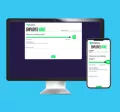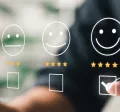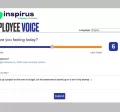
Smarter HR Surveys and Recognition Tools Are Shaping the Future
August 8, 2025
Explore how HR surveys and recognition software are evolving with AI, real-time feedback and personalization to drive employee engagement and performance.
Today’s workforce expects more — more transparency, more appreciation and more of a voice in shaping their experience at work. But with employee engagement levels dipping and burnout rising, the old HR tools and strategies aren’t cutting it anymore.
Annual surveys? Too slow. One-size-fits-all recognition? Too generic. Employees want to be heard in the moment and recognized in ways that actually matter to them.
That’s where modern HR technology is helping. With robust HR surveys and more personalized recognition platforms, HR leaders now have the tools to listen more often, respond more meaningfully and build stronger, more connected workplaces.
This blog explores how employee feedback and recognition are converging and why combining them is key to bolstering performance, improving retention and creating a culture that employees want to be part of.
The Current State of HR Surveys and Employee Recognition
For years, many organizations have relied on a familiar rhythm for employee surveys: send out an annual engagement survey, collect responses, spend a few weeks analyzing results and then maybe — if time allows — take action.
The challenge is that this traditional process is often too slow, too formal and too infrequent to address issues as they arise. By the time results are analyzed, employee sentiment may have already shifted.
Employee recognition faces similar limitations. Many organizations today still rely on ad hoc or manual efforts for recognizing employees. Tracking work anniversaries in spreadsheets or sending the occasional congratulatory email might check a box, but it doesn’t scale — and it rarely creates meaningful impact.
In both cases, these traditional approaches can leave data stuck in silos, insights unused and opportunities for surveys and recognition to truly influence culture or support strategic goals left on the table.
Fortunately, modern HR tools are helping teams overcome these challenges. Let’s explore how.
The Shift Toward Real-Time, Continuous Feedback
As we all know, employee sentiment doesn’t follow a calendar or timeline. It shifts with workloads, leadership shifts, team dynamics and even outside stressors. That’s why HR teams are moving away from static, once-a-year surveys and embracing tools that enable real-time, continuous feedback.
Technology is making this shift possible. Employee survey platforms like The Happiness Index make it easier to conduct a range of surveys, track employee sentiment, measure cultural health and flag patterns that signal disengagement or dissatisfaction.
And these tools now go far beyond simply gauging how employees feel. Organizations are using surveys to gain deeper insights into the workplace, such as:
- Cultural assessments that identify whether company culture aligns with employee experiences
- Values index surveys to measure how well the organization lives up to its core values
- Wellbeing surveys that track mental, physical and emotional health trends
- Relationship and engagement surveys that explore trust, collaboration and team dynamics
Pulse surveys have also surged in popularity as a faster, more agile way to check in with employees. These short, targeted surveys can be sent weekly, monthly or triggered by specific events like onboarding, promotions or team changes. Instead of waiting months for results, leaders get actionable insights and can respond before small issues turn into costly problems.
These modern approaches are making employee feedback easier to gather and analyze — and empowering HR leaders to act on insights in a more timely, effective way.
How Employee Recognition Is Becoming More Personalized and Peer-Driven
Historically, employee recognition has been a top-down effort. A manager or HR might give a shoutout at the townhall, organize a pizza party or roll out a sheet cake for someone’s five-year anniversary. Maybe they'd even throw in a plaque or generic gift card for good measure.
While well-intentioned, these gestures often fall short for today’s workforce. They rarely reflect the everyday contributions employees make — and they often don’t feel personal or impactful.
Today, technology is helping shift recognition from occasional, top-down gestures to peer-driven, personalized experiences woven into daily work.
Employee Recognition Is Becoming Peer-Driven
Employee recognition is now becoming more frequent, more peer-driven and far more accessible. Instead of relying solely on just HR or managers, organizations are enabling employees to recognize one another in real time through employee recognition platforms.
These platforms, like Inspirus Connects, make peer-to-peer recognition easy for both HR and employees. Organizations can combine milestone recognition, social recognition and points-based programs to celebrate achievements in meaningful ways.
Best of all, this flexibility allows HR teams to tailor the platform to fit their culture, budget and what their people value most.
Employee Recognition Is Becoming Personal and Timely
Personalization is no longer optional. A vague “great job” doesn’t carry the same weight as a message that calls out a specific accomplishment or connects to what matters to the individual. Employees want to see that their contributions make an impact and that their work is valued.
Recognition platforms are making this easier by offering flexible rewards, giving employees the freedom to choose what's most meaningful to them. Depending on the platform, reward options may include popular merchandise, gift cards, event tickets or even donating to a cause they care about. This level of choice creates a more personalized and meaningful experience, increasing the impact of every recognition moment.
Timing is equally important. A thank-you that arrives weeks late often feels like an afterthought. With automated tools, appreciation can be delivered when the moment is still fresh, reinforcing positive behavior and boosting morale across teams.

Integration of HR Surveys with Recognition Platforms
Employee surveys and employee recognition are powerful on their own, but even more so when paired together.
Traditionally, these programs have operated separately, offering limited insights into the full employee experience. But thanks to today’s technology, employee surveys and recognition platforms can now work together, helping HR teams uncover what’s driving engagement and understanding the impact of programs.
Tools like Inspirus’ Employee Voice, a 24/7 anonymous pulse survey, empower employees to share how they’re feeling and why, directly within the platform. When paired with recognition data, these insights help HR leaders validate trends, spot blind spots and determine whether recognition efforts are actually moving the needle. For example, if recognition activity increases but engagement scores stay flat, it may point to a disconnect in how recognition is being delivered or perceived.
Some of the key benefits of integrating survey and recognition tools include:
- Validating trends – Recognition patterns can confirm whether feedback matches how appreciation is being expressed across teams.
- Identifying blind spots – Gaps in recognition activity may help explain low morale or disengagement flagged in survey results.
- Measuring program impact – Survey feedback helps determine whether recognition efforts are actually improving engagement, satisfaction or performance.
- Faster intervention – Integrated data helps HR teams act sooner, addressing issues before they escalate.
- Stronger culture signals – Recognizing and rewarding positive behaviors tied to employee feedback reinforces a healthy, values-driven culture.
Together, survey feedback and recognition data offer a fuller, more connected picture of how employees are doing and how organizations can better support them.
AI and Predictive Analytics in HR Surveys and Recognition
AI is quickly shaping the way we work, and employee surveys and recognition are no exception. This new advancement in technology is helping HR anticipate what employees need before problems surface and address it more quickly.
By analyzing trends in survey responses, recognition activity, and engagement data, AI-powered tools can help surface early warning signs of burnout, disengagement or turnover risk. This enables HR teams to act faster and with greater accuracy. In fact, research from the University of Liverpool shows that predictive analytics can significantly improve HR practices.
Here are just a few ways AI can be used in HR surveys and recognition:
- Detecting shifts in employee sentiment and engagement
- Recommending timely recognition moments based on behavior
- Suggesting personalized rewards aligned with employee preferences
- Auto-generating recognition messages that sound authentic
- Flagging recognition gaps across departments or teams
And this is just the start. As AI continues to evolve, its role in shaping the employee experience will only grow. From surfacing insights to guiding next steps, AI will help HR teams create more proactive, personalized and impactful recognition and engagement strategies.
Mobile-First and Offline-Worker Inclusion
Not every employee works at a desk or has regular access to email. In sectors like manufacturing, healthcare and hospitality, many employees are mobile, shift-based or entirely offline. And these deskless workers represent 80% of the global workforce!
As technology continues to make it easier to reach these employees, more and more companies are adopting tools that ensure everyone can take part. Things like mobile-friendly platforms, text-based surveys, QR codes and even on-site kiosks make it easier for everyone to share feedback and receive recognition.
When every employee can participate, no matter where or how they work, it reinforces that every contribution matters and every voice counts.
What HR Leaders Should Be Doing Now to Prepare
Employee feedback and recognition are two of the most powerful tools HR can use to build better workplaces. But to truly shape the work environment, they need to be implemented with purpose rather than treated as a box to check.
Start by taking stock of what’s in place. Are surveys reaching all employees? Are recognition efforts equitable, timely and visible across teams? Are tools integrated or operating in silos?
Next, evaluate whether your current platforms can scale with your needs. Look for solutions that combine recognition, surveys and analytics into one ecosystem (like Inspirus Connects!).
Lastly, assess how well your leaders and managers are supporting these efforts. Tools alone don’t shape culture, people do. Managers need training on how to give meaningful recognition and respond to feedback in a thoughtful way. Even the best strategies will fall flat if leaders aren’t equipped to act on insights or bought in on the importance of recognition.
The Connected Future of HR Experience
Employee feedback and recognition can no longer operate in isolation. The strongest organizations are unifying these two areas into a single experience — one that listens, responds and evolves with the workforce.
HR tech should help people feel seen, valued and supported. When surveys inform recognition, recognition reinforces culture and culture drives performance, everything starts to click.
The organizations that will lead the future of work are the ones that use technology not just to automate processes, but to amplify what makes work worth showing up for. It’s about creating connected, human-centered experiences that reinforce purpose and culture at every touchpoint.
Ready to see how employee feedback and recognition can work together in your organization? Connect with Inspirus to explore what’s possible.




